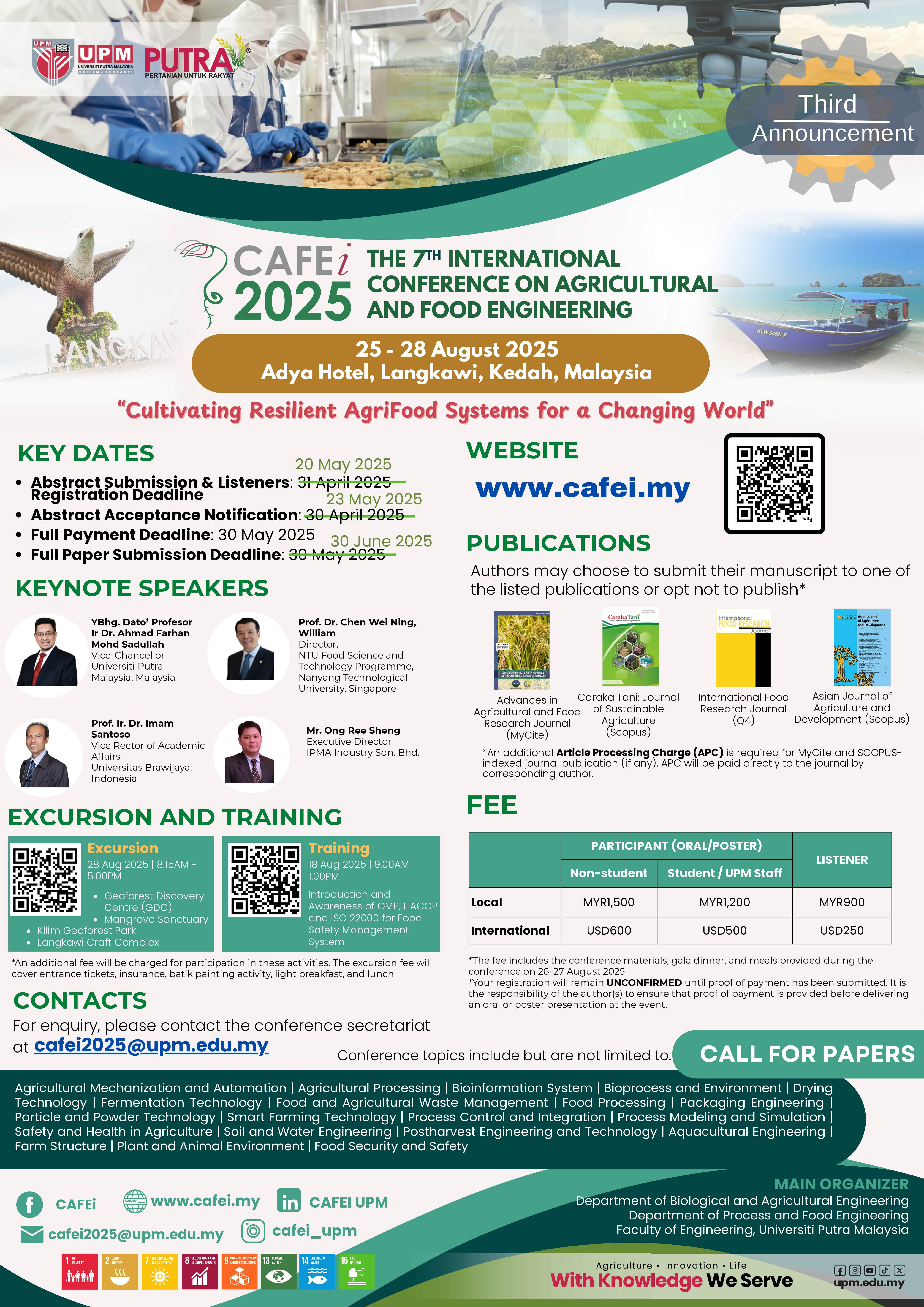Proximate Composition of Different Parts of White Cassava (Manihot esculenta Crantz) Plant as a Ruminant Feed
DOI:
https://doi.org/10.36877/aafrj.a0000181Abstract
Cassava (Manihot esculenta Crantz) is the third-largest carbohydrate food source in the tropical region after rice and corn. Its flesh is used to produce foods, while the other parts of the plant are not fully exploited. This research aimed to evaluatetheproximate composition of the cassava plant (Rayong 90 variety). Six different parts namely leaf, petiole, young stem, tuber, cortex and periderm of white variety cassava plants were dried and powdered to determine their proximate composition (protein, carbohydrate, fat, crude fiber, ash, moisture). The results show that the leaf is the most nutritional compared to other parts. Leaf had 43.80% carbohydrate, 23.87% protein, 13.66% crude fiber, 6.53% ash, 6.00 % crude fat and 5.00% moisture content. The crude protein for other parts were very low, ranging from 2.54% to 10.20%. The white cassava variety plant was very high in carbohydrates, ranging from 30.48% to 86.77% of dry matter. The mean percentage of crude fat found within the range from 0% to 6.00%. From the results, it can be concluded that a leaf of white cassava variety can be used to develop a potential high carbohydrate and protein ruminant feed because it has appreciable levels of the nutrient.Downloads
Published
How to Cite
Issue
Section
License
Copyright (c) 2021 Sarah Binti Idris

This work is licensed under a Creative Commons Attribution-NonCommercial 4.0 International License.
Author(s) shall retain the copyright of their work and grant the Journal/Publisher right for the first publication with the work simultaneously licensed under:
Creative Commons Attribution-NonCommercial 4.0 International (CC BY-NC 4.0). This license allows for the copying, distribution and transmission of the work, provided the correct attribution of the original creator is stated. Adaptation and remixing are also permitted.

This broad license intends to facilitate free access to, as well as the unrestricted reuse of, original works of all types for non-commercial purposes.
The author(s) permits HH Publisher to publish this article that has not been submitted elsewhere.

.png)

.jpg)



